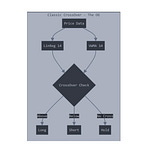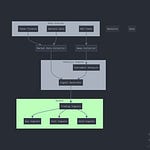Important: There is no guarantee that ATS strategies will have the same performance in the future. I use backtests and forward tests to compare historical strategy performance. Backtests are based on historical data, not real-time data so the results shared are hypothetical, not real. Forward tests are based on live data, however, they use a simulated account. Any success I have with live trading is untypical. Trading futures is extremely risky. You should only use risk capital to fund live futures accounts and if you do trade live, be prepared to lose your entire account. There are no guarantees that any performance you see here will continue in the future. This is for educational purposes only. I recommend using ATS strategies in simulated trading until you/we find the holy grail of trade strategy.
Housekeeping
Request: I am seeking an invitation code for Manus. If anyone can help, I would greatly appreciate it. Thank you in advance.
To platform, or not to platform—that is the question: Whether 'tis nobler in the markets to suffer the slings and arrows of outrageous execution costs, Or to take arms with agents against a sea of data...

As a quick reminder, we’re on the hunt for the holy grail of automated trading strategy. If you have any questions, feel free to reach out to me (Celan) directly at AutomatedTradingStrategies@protonmail.com.
If you've been following this series, you know how AI agents are revolutionizing the trading landscape and that landscape is changing daily. It’s hard to follow all the announcements, let alone develop the best use cases for our hunt. My hope for this series is to bridge that gap. We've explored agentic workflows (Part 1), dissected the interplay between ML and LLMs (Part 2), and examined how these technologies are reshaping trading strategies (Part 3). Now it's time to get practical—where exactly do we deploy these newfound superpowers?
Trading platforms are the battlegrounds where our agentic strategies will live or die, but not all platforms are created equal. The right platform isn't just about execution; it's about whether it can support the full stack of AI capabilities we've been discussing over the last two months.
Remember when choosing a broker was simply about commission rates and market access? Much like market inefficiencies after someone publishes them, those days are gone. The trading platform question has become increasingly complex as AI capabilities expand. The best course of action these days is to look for agentic friendly platforms.
Is Your Trading Platform Agentic Friendly
I've noticed something fascinating happening in the digital world: AI agents are developing preferences. Just as humans gravitate toward certain stores or brands, AI agents perform better with certain systems/architectures—and this preference is reshaping the entire landscape.
We're witnessing the birth of the ‘Preference Amplification Effect’. I just made that term up, but it speaks to what’s happening as agents consistently favor particular features, those businesses/websites that have those features experience accelerated adoption. This creates a feedback loop where agentic friendly businesses become even more optimized for agents.
Marketing departments are frantically adapting to this new paradigm. Suddenly, there’s a new “identity” to capture. Now you have two primary markets: humans, with all their emotional decision-making and brand loyalty, and agent systems with their algorithmic, data-driven preferences. This dual-audience approach isn't just a minor adjustment—it's a complete re-imagining of how businesses position themselves.
When OpenAI's agent "The Operator" makes an appointment with the store that has the largest data footprint, it's essentially free marketing. This also explains why we're seeing API-first trading platforms gaining significant traction against established players who built their systems primarily for human interaction.
Here’s a possible agentic workflow that incorporates a trading platform using Open AI’s new “Agents API”, three new development tools just released yesterday to include computer use:
Even the concept of brand value is being redefined. What makes a trading platform valuable in the agentic era? It's not just reputation or user experience—it's how seamlessly the platform serves both human and agent "customers." The winners will be those that create unified experiences across both domains.
When evaluating platforms, I find it helpful to think from the perspective of the agentic workflows we discussed in Part 2 and Part 3. Ask yourself:
For Data Ingestion: Does the platform provide easy access to the data sources your strategy requires? Can your agents efficiently process and transform this data?
For Analysis: Does the platform support the ML libraries and computational resources your models need? Can your LLMs connect and interpret the analysis?
For Decision-Making: Can your strategies effectively translate insights into executable trading decisions on the platform?
For Execution: Does the platform offer the market access, order types, and execution quality your strategy demands?
For Monitoring: Can you track performance, risk, and market conditions in real-time?
After extensive research and personal experimentation (this announcement has been delayed for over a year), I feel confident about what I believe are the two leading systems for agentic trading. This podcast talks about the advantages of both and provides a few examples of emerging platforms in this space. Many traders are also taking a hybrid approach like the one I’ve outlined below.
First, I want to provide a quick primer on both platforms and provide you with an overview of the workflow I’d like to create for ATS.







